In the rugged mountains of Europe, Asia, and Africa soars one of nature’s most distinctive birds – the bearded vulture, also known as the lammergeier. While most vultures present in somber shades of black, brown, and white, the bearded vulture stands apart with its striking rusty-orange to fiery red plumage. This unique coloration has fascinated scientists and bird enthusiasts for centuries, especially since it’s not the result of natural pigmentation. Instead, these magnificent birds actively create their flame-colored appearance through a deliberate and unusual cosmetic behavior. The story behind how these vultures achieve their fiery hue involves iron-rich mud, meticulous grooming, and evolutionary advantages that showcase one of nature’s most fascinating examples of animal aesthetics.
The Natural Appearance of Bearded Vultures
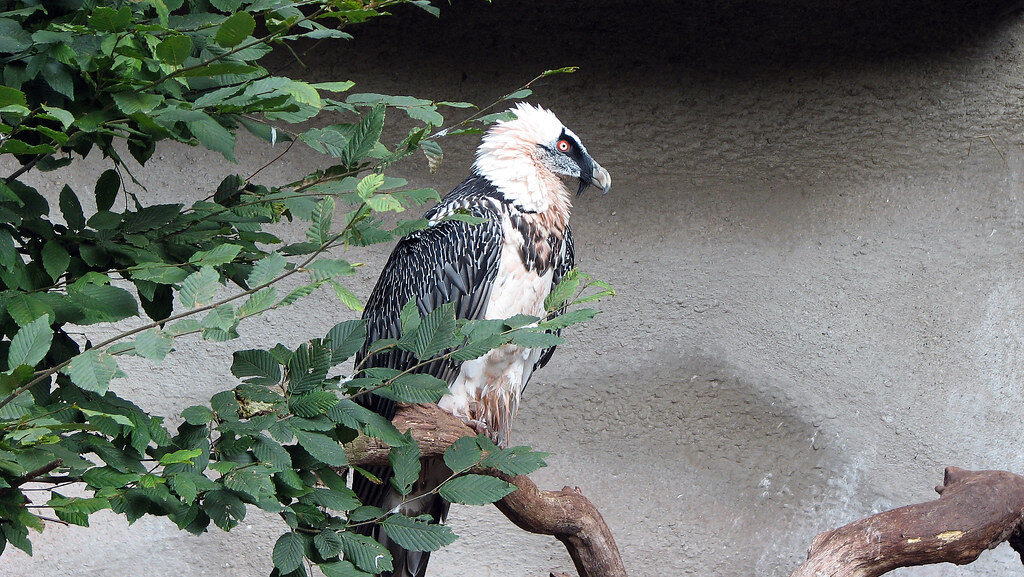
Bearded vultures (Gypaetus barbatus) naturally possess white to pale cream-colored feathers on their head, neck, and underparts, contrasting with darker wings and tail. Without any intervention, these birds would maintain this lighter appearance throughout their lives. Young bearded vultures display this natural coloration until they begin adopting the cosmetic behaviors that will transform their appearance. The transition usually begins as they reach sexual maturity, between the ages of five and seven years. This natural state can occasionally be observed in captive birds that don’t have access to the substances needed for their cosmetic transformation, providing researchers with a clear before-and-after comparison of their remarkable self-coloring process.
The Discovery of Cosmetic Coloration
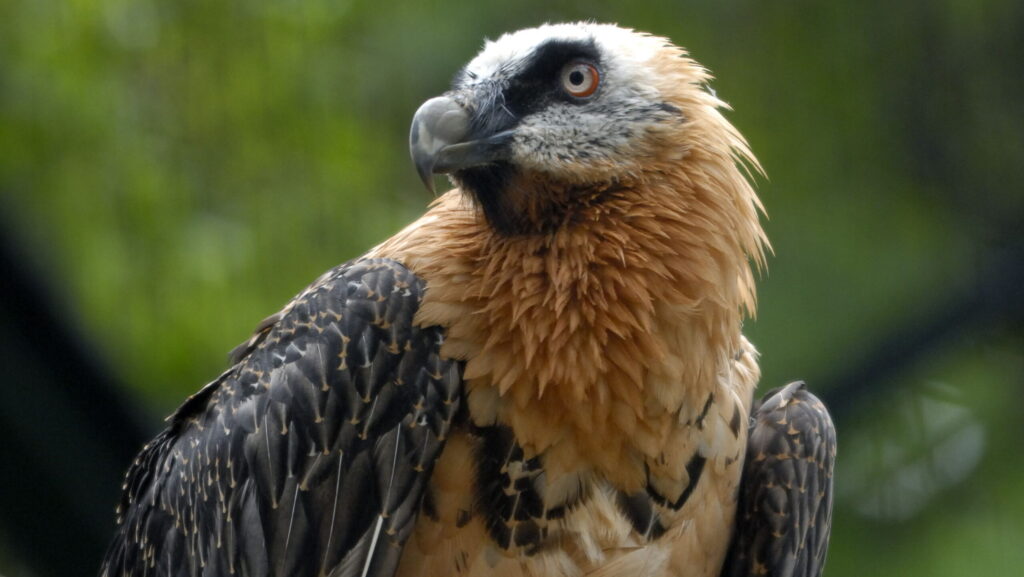
The mystery of the bearded vulture’s unusual coloration puzzled naturalists for centuries before the truth was uncovered. Early scientists and bird enthusiasts debated whether the rusty color came from natural pigmentation, environmental staining, or dietary influences. The breakthrough came in the 20th century when researchers observed the birds deliberately bathing in iron-rich mud and soil. This revolutionary discovery shifted understanding from passive theories to the recognition that bearded vultures were actively altering their appearance. In 1991, a comprehensive study published by Spanish ornithologist Juan José Negro and colleagues provided definitive evidence of this cosmetic behavior, documenting how wild bearded vultures sought out iron-rich soils and applied them to their plumage. This research effectively settled the long-standing debate and opened up new questions about why these magnificent birds would engage in such unusual behavior.
The Mud Bath Process
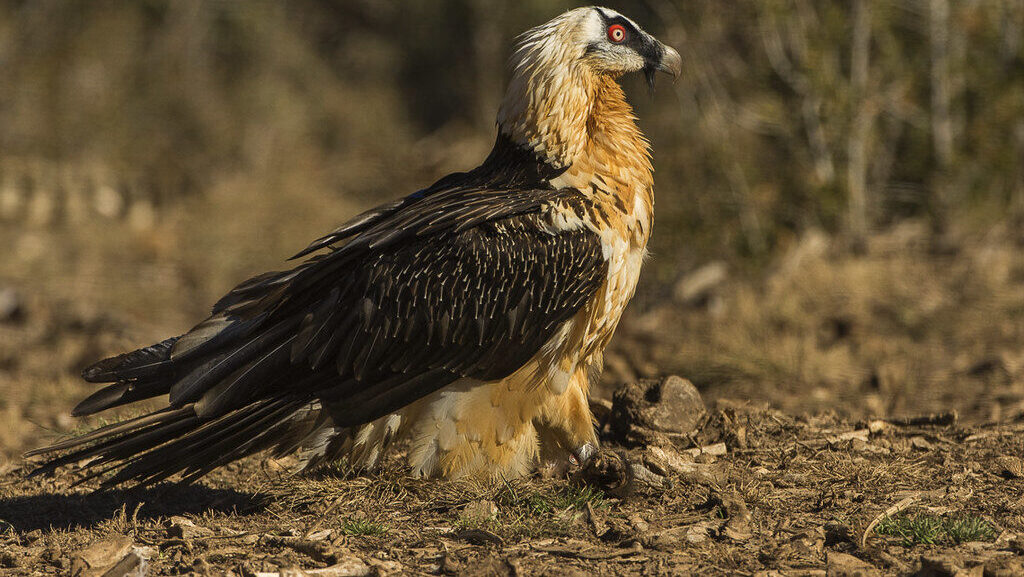
Bearded vultures engage in a deliberate and methodical process to achieve their distinctive coloration. The birds seek out specific locations with iron oxide-rich soils or mud, often returning to the same sites repeatedly. Once they locate suitable material, they immerse themselves in shallow pools or wet areas containing these iron-rich substances. Observations show that bearded vultures will spend anywhere from 30 minutes to two hours bathing and coating themselves in this reddish mud. After bathing, they meticulously preen their feathers, working the iron particles deep into their plumage. This isn’t a one-time event but rather a regular maintenance ritual that bearded vultures perform throughout their adult lives, with some individuals engaging in this behavior as frequently as once a month to maintain their vibrant appearance.
The Chemistry Behind the Color
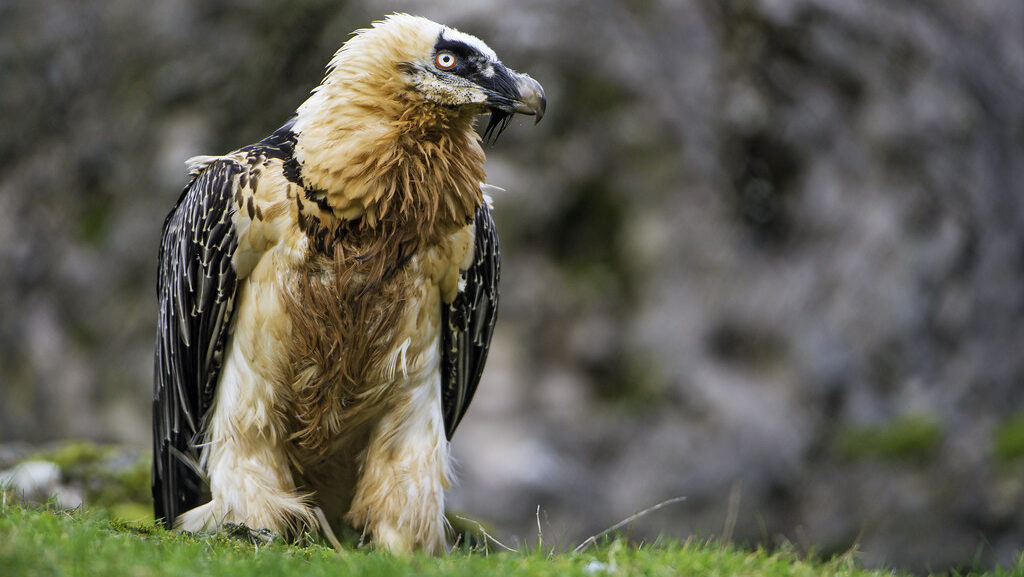
The fiery hue of bearded vultures comes from iron oxide, commonly known as rust, which they absorb from soil and water sources in their habitat. Iron oxide contains ferric compounds that produce the characteristic reddish-orange to red-brown coloration when applied to the vultures’ naturally white feathers. The intensity of the color varies depending on the concentration of iron compounds in the soil sources the birds utilize. Chemical analysis of the stained feathers shows that the iron particles bind to the keratin structure of the feathers, creating a relatively stable coloration that persists until the feathers are molted. Interestingly, the pH of the birds’ preen oil may interact with the iron compounds, potentially enhancing the adhesion of the pigment to their feathers and creating variations in the resulting hue.
Regional Variations in Coloration

The intensity and shade of a bearded vulture’s coloration can vary significantly across different populations, creating a spectrum of appearances from pale orange to deep rust-red. These variations correspond directly to the mineral composition of soils in different regions across the bird’s range. Birds in areas with highly ferrous soils, such as parts of Spain and Ethiopia, often display more intense reddish coloration. Conversely, populations in regions with less iron-rich soil, like some areas in the Alps, may exhibit lighter orange hues. Researchers have noted that these regional differences are so consistent that experienced ornithologists can sometimes identify a bearded vulture’s geographic origin based solely on the specific shade of its cosmetic coloration. These variations provide a fascinating natural experiment in how local geology influences animal appearance through behavioral adaptation.
Sexual Selection Advantages
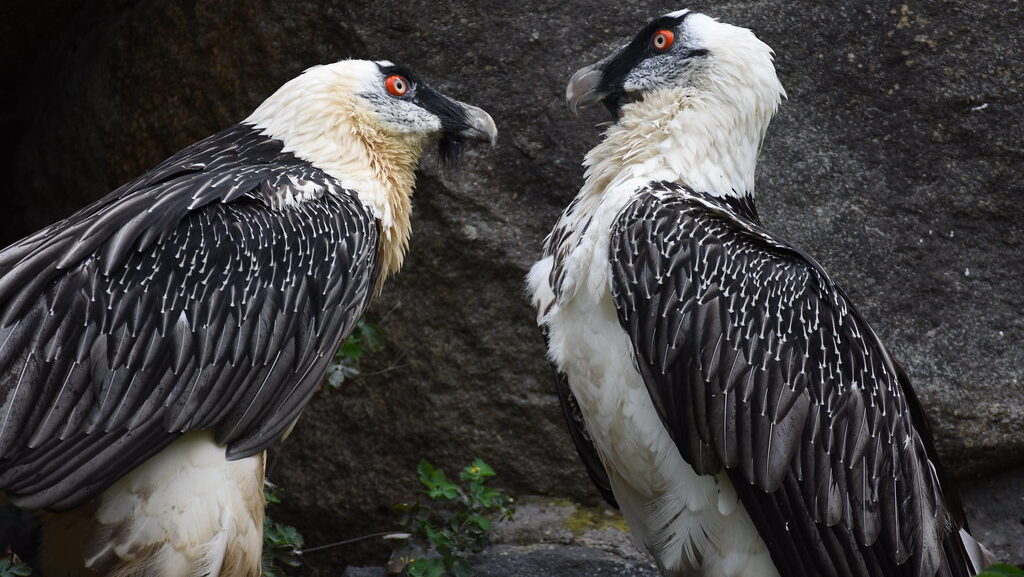
Many researchers believe that sexual selection plays a significant role in the evolution of this unique cosmetic behavior. Studies suggest that the intensity of coloration may signal an individual’s quality as a potential mate, with more vibrantly colored birds potentially demonstrating superior territory quality or foraging ability. The effort required to find and apply iron-rich soils could serve as an honest indicator of a bird’s fitness and resource-finding capabilities. In observed courtship behaviors, more brightly colored individuals appear to have greater success in attracting mates. Some researchers have noted that male and female bearded vultures both engage in this coloring behavior, but males often display more intense coloration, potentially indicating that while the behavior evolved in both sexes, it may confer different or additional advantages in males during mate selection.
Dominance and Status Signaling

Beyond mate attraction, the rusty coloration may serve as a visual signal of dominance and status within bearded vulture society. Field observations indicate that more intensely colored individuals often demonstrate dominance at feeding sites, with less colorful birds yielding to their more vividly hued counterparts. This status signaling function provides a social advantage that could help explain the evolutionary persistence of this energy-intensive behavior. The stark contrast of the rusty color against mountain landscapes makes these birds highly visible to others of their kind, potentially enhancing the effectiveness of these status displays. Researchers have documented that in confrontations between individuals, the more brightly colored vulture typically prevails, suggesting that the cosmetic coloration serves as a visual shorthand for competitive ability and reduces the need for potentially dangerous physical confrontations.
Antimicrobial Properties
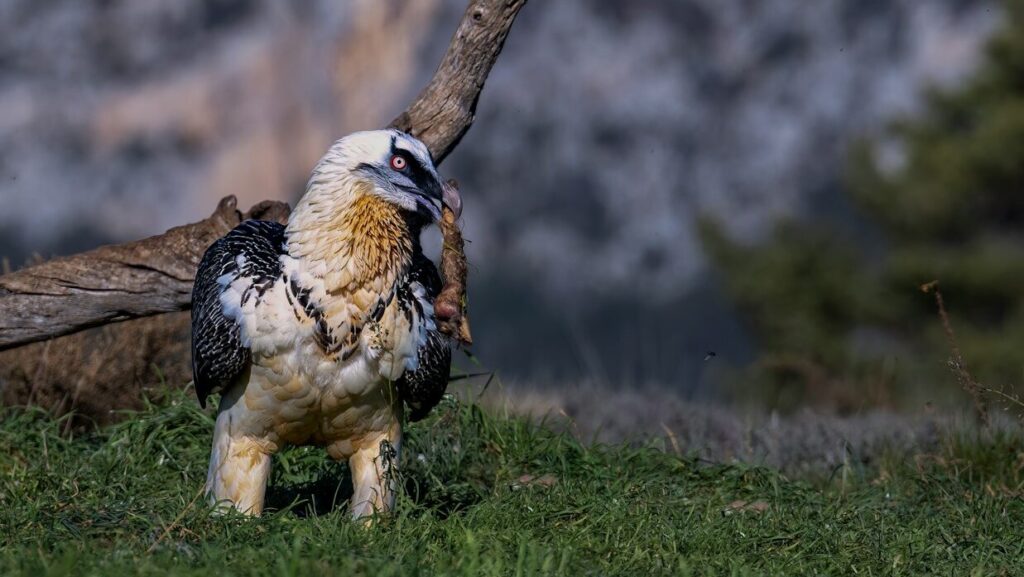
A fascinating potential benefit of the iron oxide application is its antimicrobial properties, which may help protect bearded vultures from harmful bacteria and parasites. Iron compounds are known to inhibit the growth of certain microorganisms and could potentially create a less hospitable environment for feather-degrading bacteria and feather mites. This protective function would be particularly valuable for scavenging birds regularly exposed to carcasses and potential pathogens. Laboratory studies have demonstrated that feathers treated with iron oxide compounds similar to those used by bearded vultures show reduced bacterial growth compared to untreated feathers. This hygiene hypothesis represents an intriguing example of possible medicinal behavior in birds and suggests that the cosmetic behavior might serve multiple adaptive functions beyond visual signaling.
Feather Strength and Maintenance

The application of iron-rich compounds may actually strengthen the vultures’ feathers and extend their functional lifespan. Scientific analysis has shown that iron particles can penetrate the microstructure of feathers, potentially reinforcing the keratin structure against wear and degradation. This strengthening effect could be particularly valuable for these large birds, who rely on their feathers for the soaring flight necessary to cover vast territories in search of food. The iron oxide may also help reduce feather damage from the harsh ultraviolet radiation present at the high altitudes where these birds typically soar. Additionally, some researchers have suggested that the iron application might help regulate the birds’ feather-dwelling microbiome, creating a more balanced ecosystem of microorganisms that could benefit overall feather health and integrity.
Thermoregulation Benefits
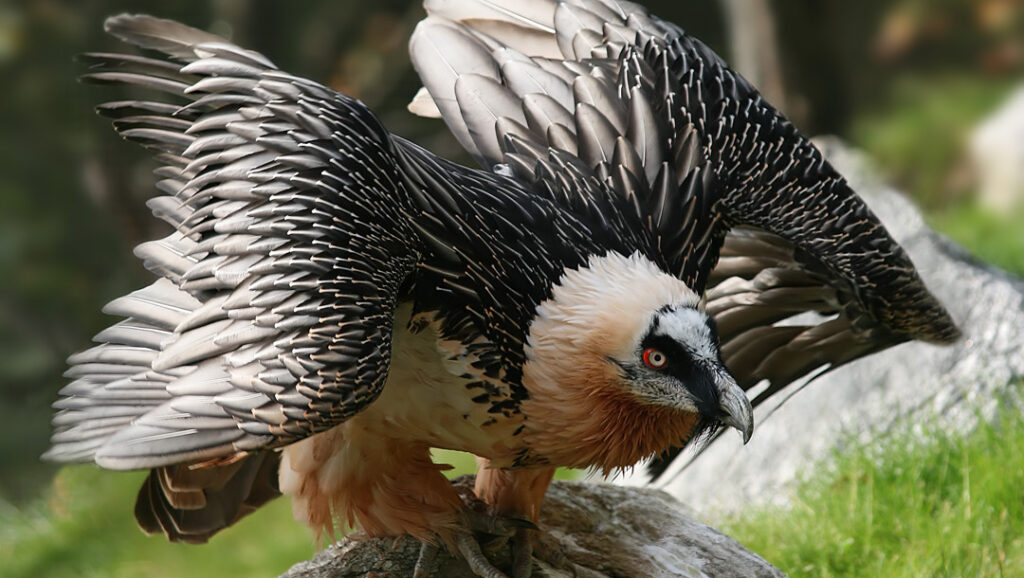
The rusty coloration may provide thermoregulatory advantages to bearded vultures in their cold mountain habitats. Darker-colored surfaces absorb more solar radiation than lighter ones, potentially helping these birds warm themselves more efficiently during cold mountain mornings. Thermal imaging studies have shown that iron-stained feathers warm more quickly in sunlight than unstained feathers, which could be particularly valuable during the breeding season when adults need to maintain body heat while incubating eggs. This warming effect might allow bearded vultures to begin foraging earlier in the day when competitors are still warming up, giving them a competitive advantage. The thermoregulation hypothesis is supported by observations that bearded vultures often spread their wings in the morning sun, a behavior that would maximize the warming effect of their colored plumage.
Conservation Implications
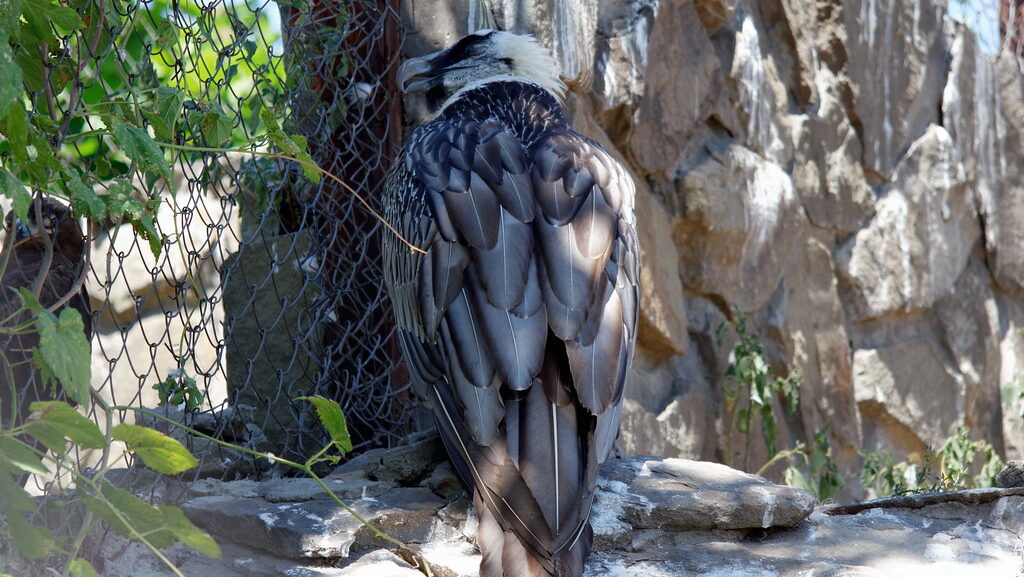
Understanding the bearded vulture’s coloration process has important implications for conservation efforts targeting this vulnerable species. Conservation breeding programs must ensure captive birds have access to appropriate iron-rich soils to maintain natural behaviors and appearance. The specific soil requirements highlight the importance of protecting not just the birds themselves but also the unique geological features within their range that provide the necessary iron sources. Conservation biologists monitor the coloration of wild populations as one indicator of habitat quality and behavioral health. In reintroduction programs in the Alps and elsewhere, providing released birds with access to appropriate soil bathing sites has been incorporated into habitat assessment and preparation, recognizing that this behavior is an integral part of the species’ natural history that must be accommodated for successful conservation.
Cultural Significance
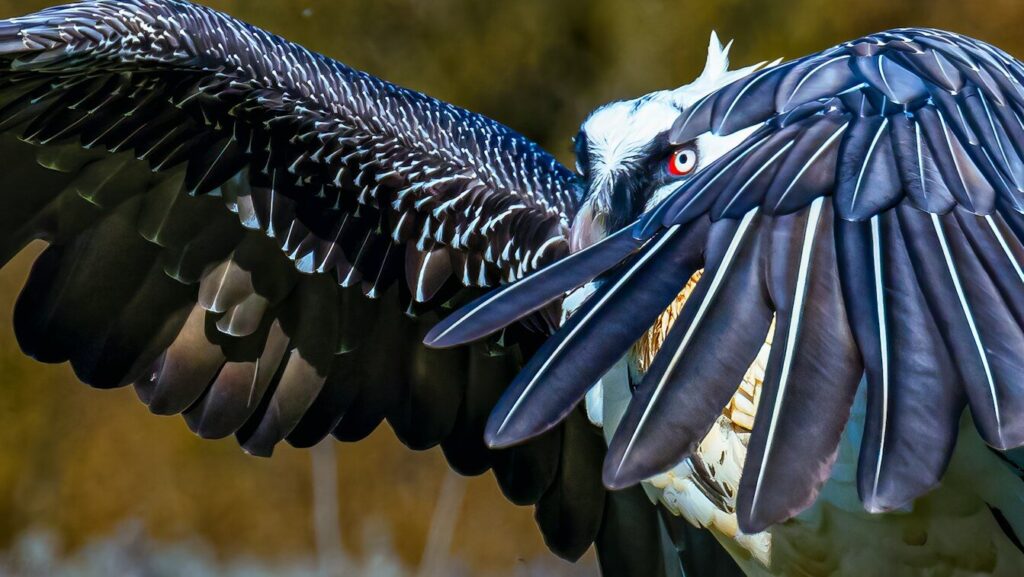
The bearded vulture’s fiery appearance has inspired myths, legends, and cultural representations across its range for centuries. In Tibet, where the bird is known as the “golden eagle,” it has been associated with sky burial practices and is considered a sacred carrier of souls. Greek mythology connected the bird to the story of Prometheus, with some accounts suggesting the “eagle” that tormented him was actually a bearded vulture, its rusty color representing the fire he stole from the gods. In European Alpine folklore, the lammergeier (lamb-vulture) was often portrayed as a fearsome creature, its blood-red plumage contributing to unwarranted fears about its predatory nature. Even today, the bearded vulture’s striking appearance makes it a flagship species for conservation campaigns, with its unique self-coloring behavior often highlighted in educational materials to capture public interest in wildlife preservation.
Ongoing Research and Future Questions
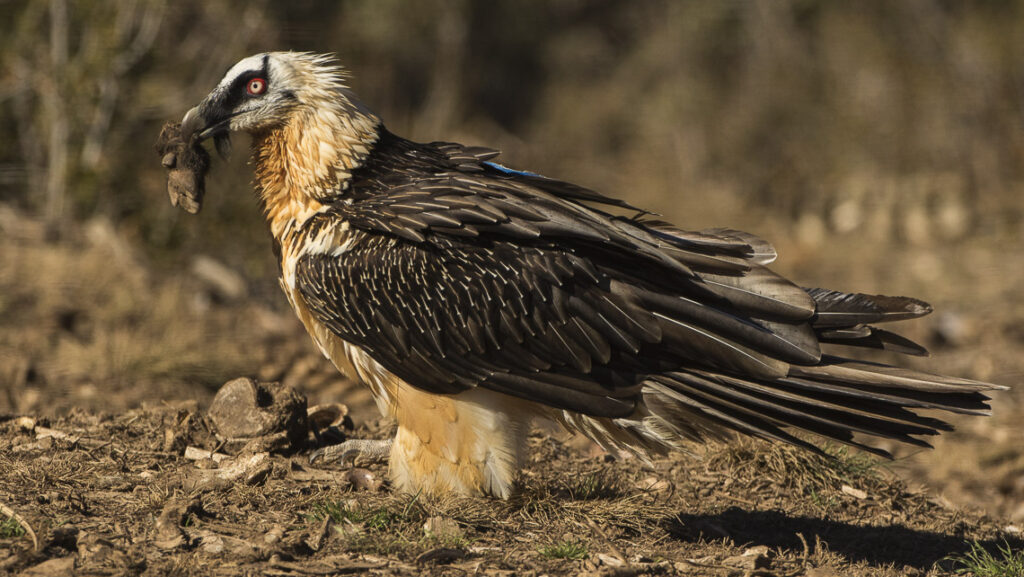
Scientists continue to study the bearded vulture’s unique coloration behavior, with several fascinating questions still under investigation. Researchers are exploring whether individual birds develop preferences for specific mud bathing sites with particular mineral compositions, potentially creating signature personal colorations. Genetic studies are examining whether there might be hereditary components to the coloring behavior, such as inherited preferences for particular soil types or bathing techniques. Advanced spectroscopy is being used to analyze exactly how the iron compounds interact with feather structures at the molecular level. Perhaps most intriguingly, comparative studies with other vulture species that don’t exhibit this behavior are helping scientists understand the evolutionary pathway that led to this remarkable adaptation, potentially revealing how and when this unique trait emerged in the bearded vulture’s evolutionary history.
Conclusion
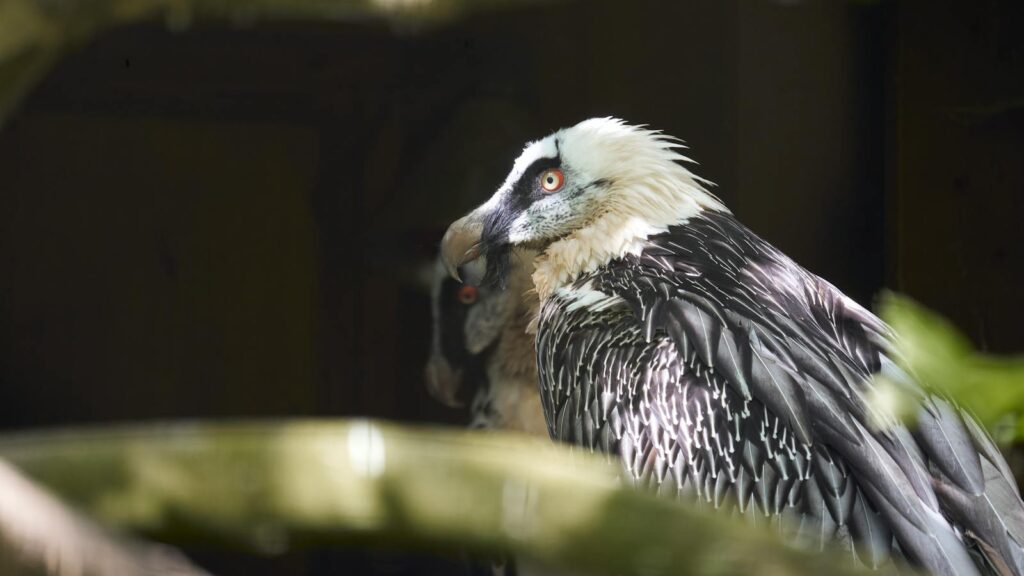
The bearded vulture’s fiery coloration represents one of nature’s most remarkable examples of animal self-decoration. Through their deliberate application of iron-rich soils, these magnificent birds transform their appearance from pale white to vibrant rusty-orange or red. This behavior serves multiple potential functions: attracting mates, signaling dominance, fighting parasites, strengthening feathers, and possibly helping with thermoregulation. The process illuminates the complex intersection of geology, chemistry, behavior, and evolution. As one of the few documented cases of true cosmetic behavior in wild birds, the bearded vulture’s coloration ritual continues to fascinate scientists and bird enthusiasts alike, reminding us that nature’s adaptations can be as beautiful as they are practical. In their fiery plumage, painted by their own deliberate actions, these vultures soar as living embodiments of both natural adaptation and aesthetic transformation.
